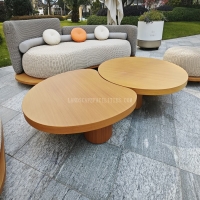Welcome to the website for landscape facilities products and knowledge.
How does the table’s design support the use of eye-tracking technology?
The seamless integration of eye-tracking technology into various fields, from academic research to user experience testing, relies heavily on an often-overlooked component: the table upon which the equipment is used. A table's design is not merely a passive platform; it is an active enabler of high-fidelity data collection. Primarily, the table provides a stable, vibration-free foundation for the sensitive eye-tracking hardware, such as remote or screen-based eye trackers. Any unintended movement can corrupt the calibration and lead to inaccurate gaze data. Therefore, designs often incorporate substantial weight and anti-slip materials to ensure absolute immobility during a session.
Furthermore, the table's design is intrinsically linked to participant ergonomics and positioning. For the eye tracker to capture a clear and consistent image of the pupil and corneal reflection, the participant must maintain a relatively fixed position relative to the camera. Ergonomically designed tables, sometimes with adjustable heights and integrated chin rests or forehead supports, help maintain this critical distance and head position. This minimizes postural shifts that would otherwise introduce noise into the data stream. By enforcing a consistent and comfortable posture, the table design directly reduces participant fatigue, which is crucial for the validity of longer studies.
Beyond stability and ergonomics, the table's architecture often facilitates an unobstructed line of sight. A minimalist design, sometimes with a transparent surface or a recessed area for a stimulus display, ensures that no part of the table itself interferes with the eye tracker's field of view. This is essential for capturing natural eye movements without any physical barriers. Cable management systems integrated into the table's structure also prevent tripping hazards and keep cords from disrupting the participant or the equipment setup. In essence, a well-designed table creates a controlled environment, isolating the technology and the participant from external variables. It transforms a simple piece of furniture into a crucial part of the data acquisition chain, ensuring that the sophisticated algorithms of eye-tracking software are working with the cleanest possible raw input.
Related search:

Recommendation
Elliptical metal outdoor table with nested design, resembling wood grain, round table